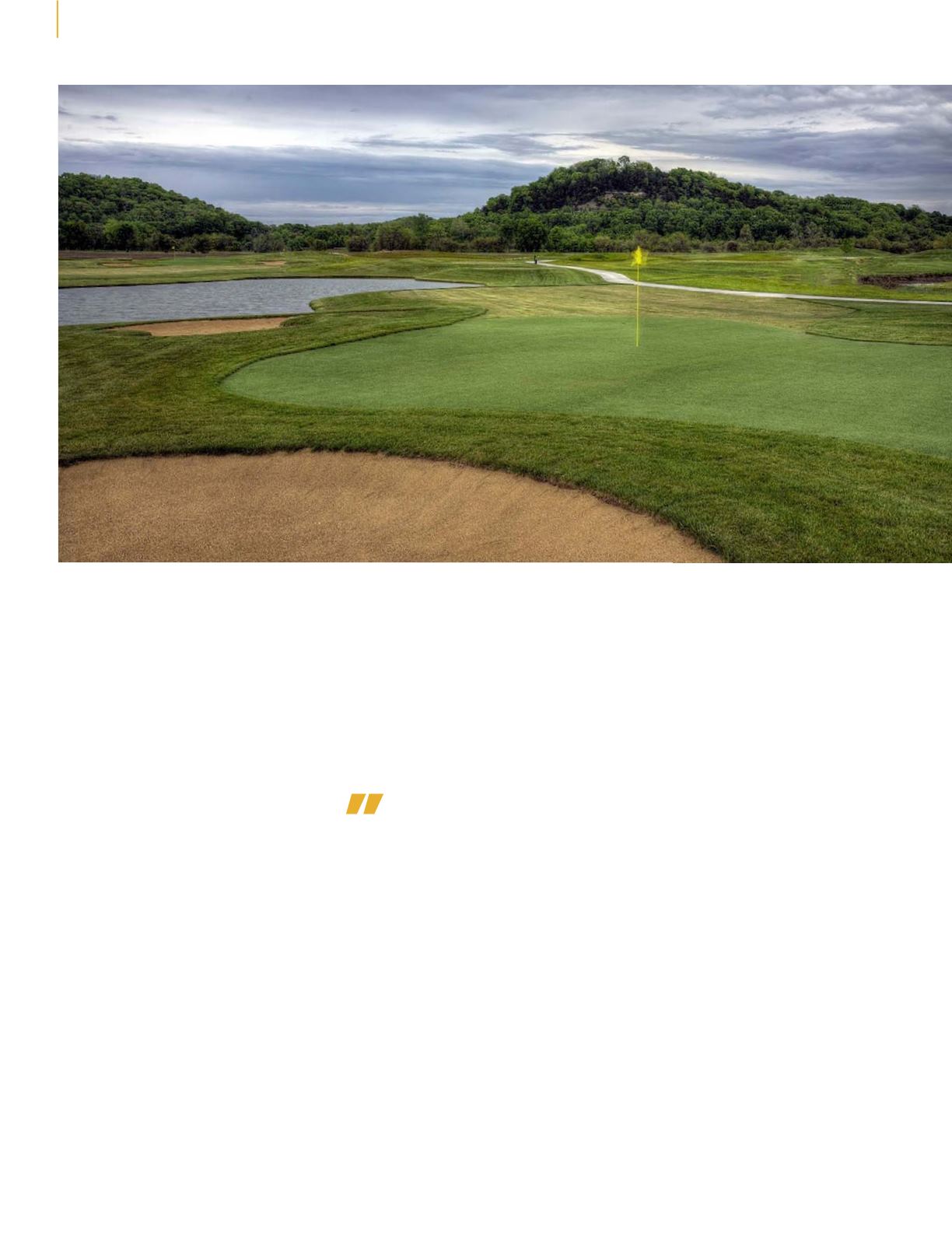

20
|
By Design
ACCESSIBILITY
golf course architects provide access
for people with disabilities already,
through their designs for traditional
golfers. This means those golf courses
that are inclusionary—family and
friends can play golf together with
them. Through the Alliance website,
golf course architects can learn to
help make golf courses they design or
renovate more barrier free. They can
also learn about programs that club
operators can include to encourage
participation at the facility by people
with disabilities and their families
and friends.”
Bel Jan reflects on her experiences
at a recent project. “At Pelican Marsh
Golf Club in Naples, Florida, a
disabled golfer closed his membership
at the club because the course became
too difficult from what had been the
most forward tees at 4,959 yards,”
she explains. “He joined a club with
an ‘executive’ length that was more
favorable to his game, but he missed
his friends—and they missed him.”
Once, under Bel Jan’s guidance,
Pelican Marsh had installed tees at
4,020 yards for 18 holes, the golfer
renewed his membership because the
course was now enjoyably playable
for him. He could play from a set of
formal teeing grounds with his long-
time friends. Bel Jan explains: “The
social aspect of golf was enhanced
for this golfer and his golf buddies,
because they could revive their
friendly rivalries!”
Distance is a recurring factor that
can make golf courses difficult
for new golfers, the less athletic,
older players or youngsters, as
well as people with disabilities, or
the elderly. Bel Jan incorporates
accessibility into her own design and
renovation work, regularly in the
form of ‘scoring tees,’ like at Pelican
Marsh, and also Pelican’s Nest in
nearby Bonita Springs and Jupiter
Island Club on Florida’s east coast.
These tees help ensure golfers play a
yardage that is fun and challenging
for them, regardless of their gender,
age or skill level.
“Scoring tees are formal in that they
are constructed and maintained as
all the other tees, and are built so
they appear as always having been
a part of the course, even when the
course has been retrofitted,” Bel Jan
explains. “The design takes into
consideration access to the tees with
a power wheelchair or single rider
golf cart, slower club head speeds,
angle of play and hazards. ‘Scoring
Courses’ have their own scorecards
and are rated by the USGA raters for
handicap purposes.”
•
Read more about golf course design
projects focused on accessibility at
Griffith Park , Pelican’s Nest and the
Ken Lanning Golf Center .Caption
The
design
takes into consideration
access to the tees
with a power wheelchair
or single rider golf cart, slower club head
speeds, angle of play and hazards
The course at Ken Lanning Golf Center was designed by Todd Clark, ASGCA,
to be fully accessible for people with wheelchairs
Photos: Ken Lanning Golf Center


















